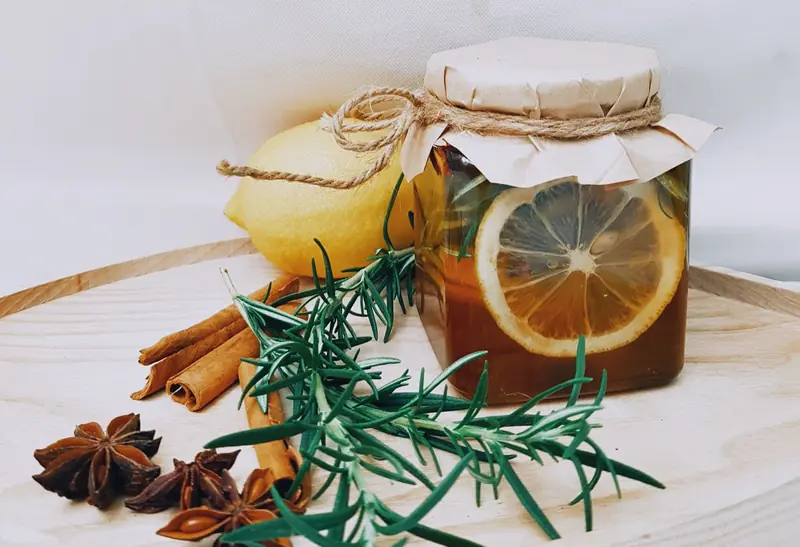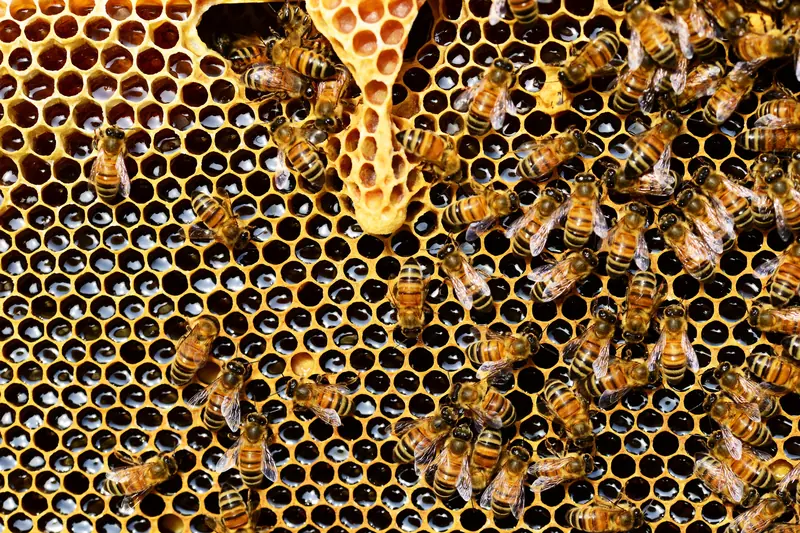
The universal “healer” will banish colds and help your eyes, heart, skin, stomach, and liver.
The Benefits of Honey
This natural treasure is produced 100% by bees through the partial digestion of collected nectar in their honey stomachs. Flower honey comes from plant materials, while honeydew honey is derived from the sweet secretions of aphids or tree bark. The latter is less valued, although both types contain active enzymes, folic acid, carotene (provitamin A), and vitamins C, E, K, B1, B2, and B6. Honey is rich in glucose, fructose, and sucrose, making up 80% of its carbohydrate content. In total, over 70 substances essential for our vitality—physical tone, organ health, growth, and muscle strength—have been identified in this healing composition.
The maximum daily dose for adults is 100 grams, while for children, it’s 50 grams. It’s more beneficial to let it dissolve in your mouth; when dissolved, it can sometimes be poorly absorbed, and when heated, it loses its healing properties (valuable components break down at temperatures of 104-122°F), turning into sugar and glucose in boiling water.

Treating Eye Conditions with Honey
Prolonged computer use, pain, and inflammation in the eye’s membrane may require healing eye drops: the protective film relaxes the corresponding muscles and restores visual acuity.
- Prepare eye drops using pure artesian water and liquid linden honey (which dilates blood vessels) in a 10:1 mixture. Instill after washing your face. Follow this regimen: a half-moon of procedures followed by the same break.
- Improvement in vision can be achieved by consuming natural remedies on an empty stomach in the morning and evening. Let the remedy dissolve in your mouth before brushing your teeth to benefit from the natural microflora. Two courses will provide a six-month effect.
- Tired eyes will see better after a “sweet” bath. Treat yourself to this spa procedure every three days. Twice, rub honey into the neck and collar area, then relax in comfortably warm water (around 95°F).
Treating the Esophagus with Honey
This natural probiotic restores the beneficial microflora of the gastrointestinal tract, improving digestion. It contains 10 types of lacto- and bifidobacteria.
Enzymes stimulate digestive processes and activate metabolism. Honey acts as a natural antiseptic, killing pathogens, healing mucosal ulcers, and easing the symptoms of gastritis, cholecystitis, pancreatitis, and ulcers of the stomach and duodenum.
Consume 30 grams of honey dissolved in water three times a day (food should be separate).
Treating Skin Conditions with Honey
Gastrointestinal diseases and chronic infection sites (tonsillitis, sinusitis, diathesis, stomatitis) can provoke eczema or herpes. This magical remedy will help heal skin diseases and slow down aging. It also enhances lymphatic drainage in wounds. The affected area is washed and disinfected: cell nutrition is activated, and microbes (streptococcus, staphylococcus) are killed.
- In half a glass of yogurt, mix a spoonful each of honey, coffee, and corn flour, then add two crushed garlic cloves and apply to the skin in inflamed areas. After it dries, remove the residue and repeat.
- Drink an herbal infusion: boil 10 grams of chamomile, 5 grams each of lemon balm, yarrow, plantain, calendula, and dog nettle in water, let it cool, and consume sweetened with honey and a few drops of apple cider vinegar.
- Honey water after evening washing will smooth out wrinkles and make the skin velvety.

Treating Stomatitis with Honey
This is a general term for diseases of the oral mucosa characterized by ulcers.
- Heat a rusty nail and fully immerse it in honey. Use the thick black substance around the iron object to coat sore gums in the evening, allowing an abscess to break overnight. After this, the swelling will subside, and the pain will ease.
- Honeycombs can strengthen gums and clean teeth of plaque.
- Steep a small amount of dried chamomile flowers in 0.5 liters of boiling water, filter, dilute the solution, and rinse your gums.
- The initial stage of stomatitis can be treated with a propolis tincture. Rinse the affected areas with hydrogen peroxide, dry them with warm air, apply a few drops of 50% propolis tincture, and dry again.
Treating Colds with Honey
- To combat inflammation of the nasopharynx, chop washed lower aloe leaves, extract the juice, and mix it with honey in a 5:1 ratio. Take a sip of the fresh mixture before meals. The continuous intake period is two months.
- Cold symptoms in the nasopharynx can be alleviated with a honey infusion of linden flowers, coltsfoot leaves, thyme, or raspberry fruits.
- For inflammation of the upper respiratory tract, inhalations can be beneficial. Dissolve honey in warm water and inhale the steam for 15 minutes. Chewing honeycombs is also effective.
- Make a honey-garlic remedy: grate garlic, mix it in equal parts with honey, and consume it with warm drinks in the evening.
- Warm milk (with lemon juice) and honey can help reduce fever and eliminate toxins.
- Recipe for an expectorant: steep a tablespoon of dried coltsfoot in a glass of boiling water, strain, and add honey. Take one sip three times a day.

Treating Sinusitis with Honey
Possible causes of sinus inflammation include infection and advanced colds. Sinusitis manifests as a runny nose and difficulty breathing through the nose due to mucus buildup.
- Relief can be achieved with nasal cotton swabs or gauze tampons soaked in honey, baking soda, and oil, as well as nasal rinses with a mixture of aloe juice. Insert the tampon into the nostril and lie down for a bit. This procedure should be done twice a day for four days.
- To clear a stuffy nose, wrap matches in cotton, dip them in honey, and insert them into your nostrils. Soon, your breathing will improve.
- Nasal rinse solution: mix honey and aloe juice in a 1:1 ratio. Instill twice a day: both nostrils should receive two drops of the solution. Adding a pinch of baking soda will make the solution more effective.
Treating the Liver and Heart with Honey
This valuable product is ideal nourishment for the liver: it has a 1:1 ratio of fructose to glucose. It regulates blood sugar levels, improves blood formation, enhances nervous system function, and stimulates tissue respiration. If you consume 50 grams of honey daily for two months, your overall condition will improve significantly.
- For heart pain, regularly consume a mixture of 40 grams of honey, seven walnuts, 200 grams of raisins, and 400 grams of zucchini caviar.
- Strengthen your heart with an alcohol tincture: pour half a liter of vodka into a pot, add 0.5 kilograms of honey, heat until a film forms (do not boil!), and let it steep.
And finally, honey is a natural antidepressant. Consuming it in the morning will help you maintain stress resilience throughout the workday. Enthusiasts of this unique product are better equipped to handle the pressures of daily life, responding to challenges calmly and peacefully.
